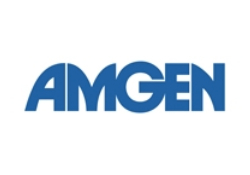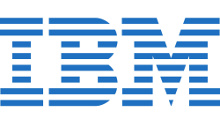Vital Transformation understands the implications of new medical procedures, technologies and policies. We measure their impact on current clinical practices in close collaboration with health care professionals, researchers, and regulators. Through our web platform and client network, we are able to communicate our findings with international decision makers and stakeholders. Vital Transformation has presented or participated in conferences sponsored by The Royal College of Physicians, European Health Forum Gastein, The European Commission, London Genetics, The European Science Foundation, The European Microelectronics Summit, and others. Our Vital Transformation branded round-tables, webinars, and conferences are often oversubscribed, and are regularly presented in partnership with global thought-leaders and organisations.
OUR RESEARCH
TEMPEST mHealth : mHealth in 28 EU Member States
3rd November, 2014
By Wendy L. Currie and Jonathan J.M. Seddon
 One of the biggest health care challenges in the coming years is how technology can be used to improve health service delivery. With the steadily increasing average life expectancy across all of Europe expected to be over 80 by 2025 and 82.5 by 2050, new and improved processes need to be delivered to meet future health requirements.
One of the biggest health care challenges in the coming years is how technology can be used to improve health service delivery. With the steadily increasing average life expectancy across all of Europe expected to be over 80 by 2025 and 82.5 by 2050, new and improved processes need to be delivered to meet future health requirements.
Database Exploitation Could Slash Clinical Trial Durations, Cut Costs
29th October, 2014
 A presentation by health care consultancy VitalTransformation shows that a fifth could be cut off clinical trial times and up to $300 million saved if databases were used for trial recruitment.
A presentation by health care consultancy VitalTransformation shows that a fifth could be cut off clinical trial times and up to $300 million saved if databases were used for trial recruitment.
Medicine adaptive pathways to patients (MAPPs): using regulatory innovation to defeat Eroom’s law
19th May, 2014
Abstract
 Eroom’s Law is, literally, Moore’s law in reverse. The pharmaceutical sector invests $50 billion annually in research for new medicines but, “the number of new drugs approved per billion US dollars spent has halved roughly every 9 years since 1950, falling around 80-fold in inflation-adjusted terms”. Pharmaceutical companies have invested enormous sums in new molecular entities (NME) in the areas of unmet medical need identified by the World Health Organization (WHO), but the approval rates from phase I are only 7% for cardiovascular disease, dropping to 4% for Alzheimer’s disease.
Eroom’s Law is, literally, Moore’s law in reverse. The pharmaceutical sector invests $50 billion annually in research for new medicines but, “the number of new drugs approved per billion US dollars spent has halved roughly every 9 years since 1950, falling around 80-fold in inflation-adjusted terms”. Pharmaceutical companies have invested enormous sums in new molecular entities (NME) in the areas of unmet medical need identified by the World Health Organization (WHO), but the approval rates from phase I are only 7% for cardiovascular disease, dropping to 4% for Alzheimer’s disease.
Whole-Body Magnetic Resonance Angiography (WBMRA) as a tool for driving efficiency in the cost and treatment of Claudication Comorbities
12th September, 2013
Abstract
 Whole-Body Magnetic Resonance Angiography (WBMRA) consists of a contrast-enhanced Magnetic Resonance Angiogram (MRA) scan of the entire body in a single step. In the diagnosis of cardiovascular co-morbidities in Peripheral Arterial Disease (PAD), the utilization of WBMRA can streamline the diagnostic process by minimizing the usage of MRA, CT, and Angiograms. In this work, the potential cost savings to the hospital by using WBMRA in PAD are modeled based on collected data that accounts for all interventions in the radiological department of a set of 50 patients with Claudication in the period 2008–2012 at Ninewells Hospital (NHS Tayside).
Whole-Body Magnetic Resonance Angiography (WBMRA) consists of a contrast-enhanced Magnetic Resonance Angiogram (MRA) scan of the entire body in a single step. In the diagnosis of cardiovascular co-morbidities in Peripheral Arterial Disease (PAD), the utilization of WBMRA can streamline the diagnostic process by minimizing the usage of MRA, CT, and Angiograms. In this work, the potential cost savings to the hospital by using WBMRA in PAD are modeled based on collected data that accounts for all interventions in the radiological department of a set of 50 patients with Claudication in the period 2008–2012 at Ninewells Hospital (NHS Tayside).
PODCASTS
NEWSLETTER
Register now to receive all the latest updates from Vital Transformation including our research, podcasts and more…
Our clients include many of the world’s leading health care organisations.





























